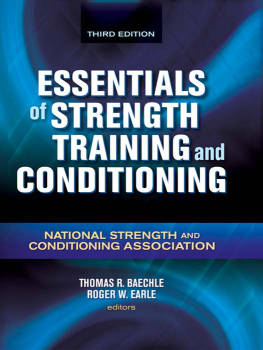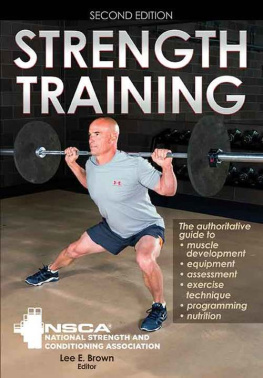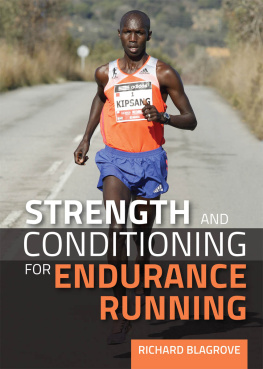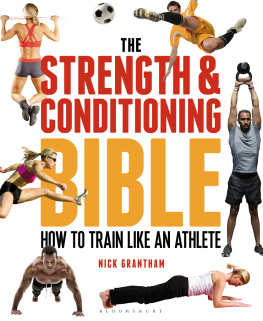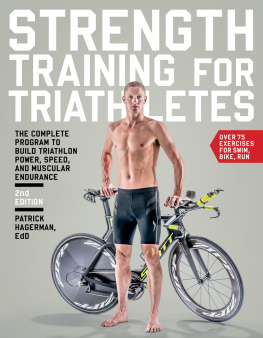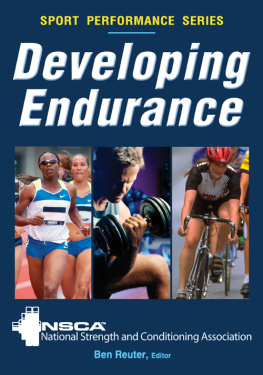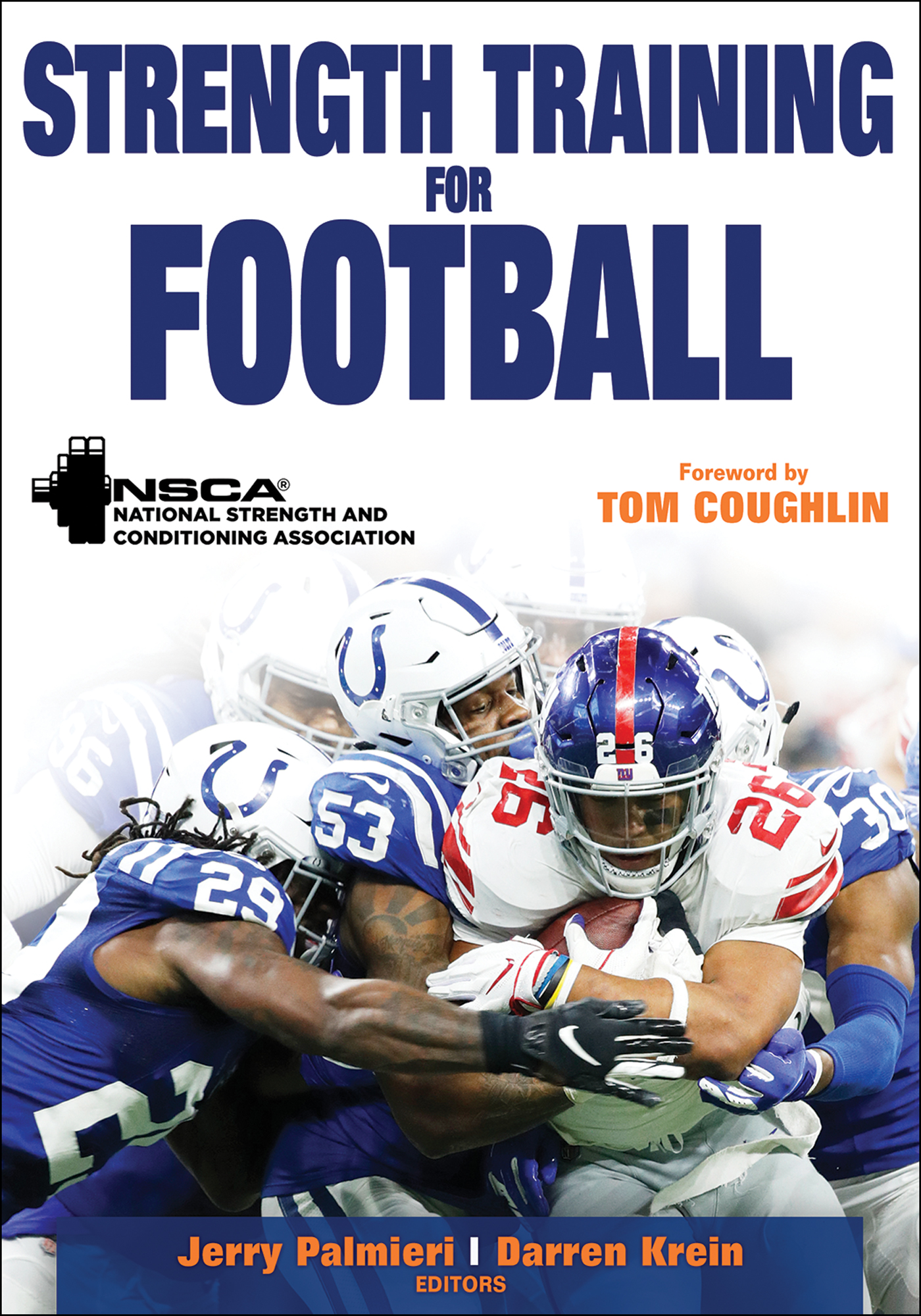Contents
Guide
Pagebreaks of the print version
STRENGTH TRAINING
FOOTB

Jerry Palmieri, MA, CSCS, RSCC*E
Darren Krein, MA, CSCS, PES, CES
EDITORS
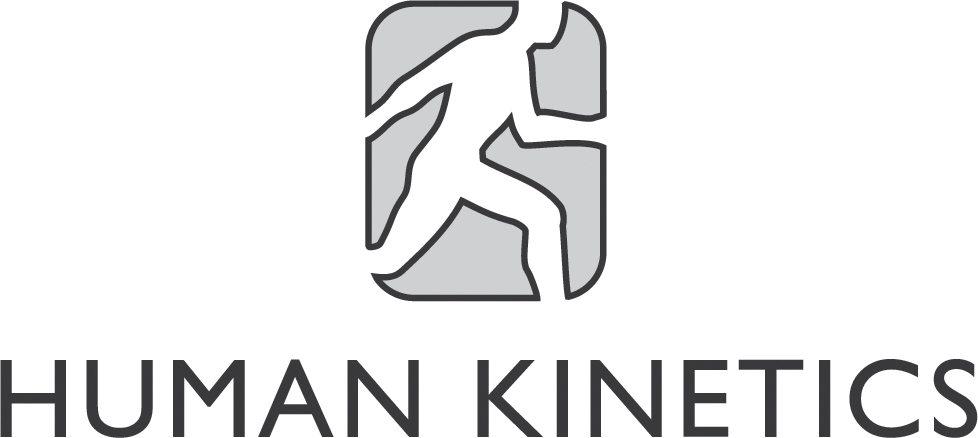
Library of Congress Cataloging-in-Publication Data
Library of Congress Cataloging in Publication Data is available. LCCN 2019021066 (print)
ISBN: 978-1-4925-7142-1 (print)
Copyright 2020 by the National Strength and Conditioning Association
All rights reserved. Except for use in a review, the reproduction or utilization of this work in any form or by any electronic, mechanical, or other means, now known or hereafter invented, including xerography, photocopying, and recording, and in any information storage and retrieval system, is forbidden without the written permission of the publisher.
This publication is written and published to provide accurate and authoritative information relevant to the subject matter presented. It is published and sold with the understanding that the author and publisher are not engaged in rendering legal, medical, or other professional services by reason of their authorship or publication of this work. If medical or other expert assistance is required, the services of a competent professional person should be sought.
The web addresses cited in this text were current as of April 2019, unless otherwise noted.
Senior Acquisitions Editor: Roger W. Earle; Senior Developmental Editor: Cynthia McEntire; Managing Editor: Miranda K. Baur; Copyeditor: Kevin Campbell; Indexer: Nan Badgett; Permissions Manager: Dalene Reeder; Senior Graphic Designer: Sean Roosevelt; Graphic Designer: Dawn Sills; Cover Designer: Keri Evans; Cover Design Associate: Susan Rothermel Allen; Photograph (cover): Joe Robbins/ Getty Images; Photographs (interior): Human Kinetics, unless otherwise noted; Photo Asset Manager: Laura Fitch; Photo Production Coordinator: Amy M. Rose; Photo Production Manager: Jason Allen; Senior Art Manager: Kelly Hendren; Illustrations: Human Kinetics; Printer: Sheridan Books
We thank Matthew Sandstead, NSCA-CPT,*D and Scott Caulfield, MA, CSCS,*D, RSCC*D at the National Strength and Conditioning Association in Colorado Springs, Colorado, for overseeing the photo shoot for this book.
Human Kinetics books are available at special discounts for bulk purchase. Special editions or book excerpts can also be created to specification. For details, contact the Special Sales Manager at Human Kinetics.
Printed in the United States of America10987654321
The paper in this book is certified under a sustainable forestry program.
Human Kinetics
P.O. Box 5076
Champaign, IL 61825-5076
Website: www.HumanKinetics.com
In the United States, email info@hkusa.com or call 800-747-4457.
In Canada, email info@hkcanada.com.
In the United Kingdom/Europe, email hk@hkeurope.com.
For information about Human Kinetics coverage in other areas of the world, please visit our website: www.HumanKinetics.com
E7410

CONTENTS
Anthony Caterisano
Brett Bartholomew
Zac Woodfin
Jeff Hurd and Nathaniel D.M. Jenkins
Richard Lansky
Anthony Lomando
Jim Peal and Erik Myyra
Ted Rath
Jerry Palmieri, Darren Krein, and Zac Woodfin
Jerry Palmieri, Darren Krein, and Zac Woodfin
Jerry Palmieri, Darren Krein, and Zac Woodfin
Darren Krein, Jerry Palmieri, and Zac Woodfin
FOREWORD
TOM COUGHLIN
Football is a physical game played by big, powerful athletes who need to be strong and fast to excel in this sport. Therefore, I have always been a proponent of an outstanding strength program for my teams. It was imperative to win the line of scrimmage with strong offensive and defensive lines. The best way to accomplish this goal was to have my players training in the weight room. Having the more physical team on the field was such a priority for me that I required my strength coach to watch the game film and determine which team won the physical battle on offense, defense, special teams, and overall.
When it came to personnel, I was determined to build my teams with strong, physical people who demonstrated a great work ethic. In my first NFL draft in 1995, as the head coach for the expansion Jacksonville Jaguars, I selected Tony Boselli as the second overall pick and the first pick of the organization. Tony was a big, strong, talented left tackle. Our second pick in that draft was a physical running back from the University of Tennessee named James Stewart. The third pick was another big, strong offensive lineman named Brian DeMarco, followed by a physical linebacker named Bryan Schwartz. I wanted to set an expectation of the kind of team that we would be. Years later, when I was the head coach for the New York Giants, one of their great linebackers, Jesse Armstead, spoke to our players. He told them that whenever he played the Jaguars he didnt know if his team was going to win or lose, but he knew they were going to be in for a very physical game.
Our two Super Bowl champion teams with the Giants were very physical. Defensive players like Michael Strahan, Osi Umenyiora, Justin Tuck, Jason Pierre Paul, Linval Joseph, and Antonio Pierce punished the opposition. Our offensive line included physical men named Chris Snee, Shaun Ohara, Kareem McKenzie, David Diehl, Rich Seubert, and Kevin Boothe. We also had powerful running backs in Brandon Jacobs and Ahmad Bradshaw. Our team leader, Eli Manning, was very devoted to weight room training year-round. For the entire 12 years I was his head coach, Eli would come to the facility every Tuesday during the season to get in an extra training session.
Strength training is a vital component in the development of high school and collegiate football players because many of them are still physically maturing. Athletes who are not exposed to a quality strength program will not only come up short in their performance on the field but will also be more vulnerable to injury. There is such a vast difference in the rate at which these younger athletes develop that failing to train properly can put one athlete at a physical disadvantage compared to another. Because of the physical nature of the game, such a disadvantage can lead to injuries.
If you are a football coach, I encourage you to educate yourself in strength training your athletes for football. This book is a great place to start because some very talented and experienced strength coaches have shared their wealth of knowledge here. Additionally, I suggest you hire a good strength coach. In 1993 when I was the head football coach at Boston College, I hired Jerry Palmieri as our strength coach. Jerry was committed to making better football players rather than powerlifters, Olympic lifters, or bodybuilders. It is imperative to understand that training for football is more than going into the gym and doing biceps and triceps exercises. While the upper body is important, your athletes must have strong, powerful hips and legs. They need to be able to run fast, jump high, push people off the ball, and tackle the ball carrier.


